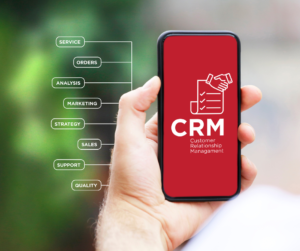Cash flow has long been a problem for small businesses, and persistently disgruntled clients are a major contributor to the problem. Businesses can employ several tactics, such as discounts, fines, disclosing customers’ payment histories to creditors, and others, to encourage customers to pay invoices on time. When AR is behind schedule, businesses can get the cash they need using credit cards, lines of credit, AR factoring/financing, and other techniques.
But small business owners are not always to blame for cash flow problems. It is frequently the result of rising accounts receivable (AR) balances and postponed customer payments. And yet, too many owners or leaders treat it as an inevitable problem they must solve.
Writing for the Oracle NetSuite website, Ian McCue says there are two ways to deal with this issue: either persuade more customers to pay their bills on time or obtain access to capital to get through the difficult period when funds are low. Either way, having information on which to base your actions – like using cloud technology to keep track of your cash flow and analyze what might be hindering it – is imperative.
Here’s what he says:
Pushing Customers to Pay On Time
Encourage early payments and penalize those who pay late. Giving customers a small discount for paying on time or early is a common tactic. It provides a clear financial incentive for the buyer to keep up with payments. Additionally, the money you might lose by giving a discount could more than make up for it by providing you with cash right away, which you can use to fund projects that will help the business grow. Similar to this, don’t be afraid to charge a late fee, interest, or finance charge to a client. Many clients require a motivator to avoid making late payments.
Make a complete investigation of potential clients. Do extensive due diligence on each one before signing any agreements or accepting any new clients. To learn more about a potential customer, check their credit report and ask for references. This makes it possible for you to avoid slow-paying clients before they become a problem.
Inform credit bureaus of customers. Companies worry about their credit because it affects their ability to get loans and credit lines, as well as whether or not they can do business with new partners. When a customer’s payment history is reported to credit bureaus, they are further encouraged to make on-time payments.
Cancel credit terms. Although not every business could do it, revoking credit terms is undoubtedly a potent way to grab customers’ attention and get rid of the risk associated with this payment structure. Leaders of small businesses should examine the payment patterns of their clientele and think about requesting immediate payment from the tardiest ones.
Covering the Cash Flow Gap With Capital
Make use of a business credit card. Like personal credit cards, business credit cards can help business owners spread out their spending and give them the breathing room they need when their accounts receivable are behind. Businesses may benefit from having a full month’s buffer if customers pay their invoices with a credit card on the day the cycle resets. The credit limits on small business credit cards are typically higher than those on personal cards, but they also depend on the owner’s income and credit history. In general, getting approved for these credit cards is not too difficult, and making consistent, timely payments could help your business build credit.
Obtain a credit line. Many businesses depend on a bank’s revolving line of credit to help them with cash flow issues. The limit is determined by the business’s financial situation, just like with a credit card. With factors like a company’s age, revenue, balance sheet, credit rating, and customer base, obtaining a line of credit may be more challenging than obtaining a credit card.
Finally, use invoice factoring. Another quick source of funding to think about is invoice or AR factoring. This entails offering your past-due invoices to a “factor,” who will pay your company a portion of the total amount due. Sometimes your business receives the remaining funds after deducting a “factoring fee,” but occasionally the factor collects payments from clients, which could damage those relationships.





